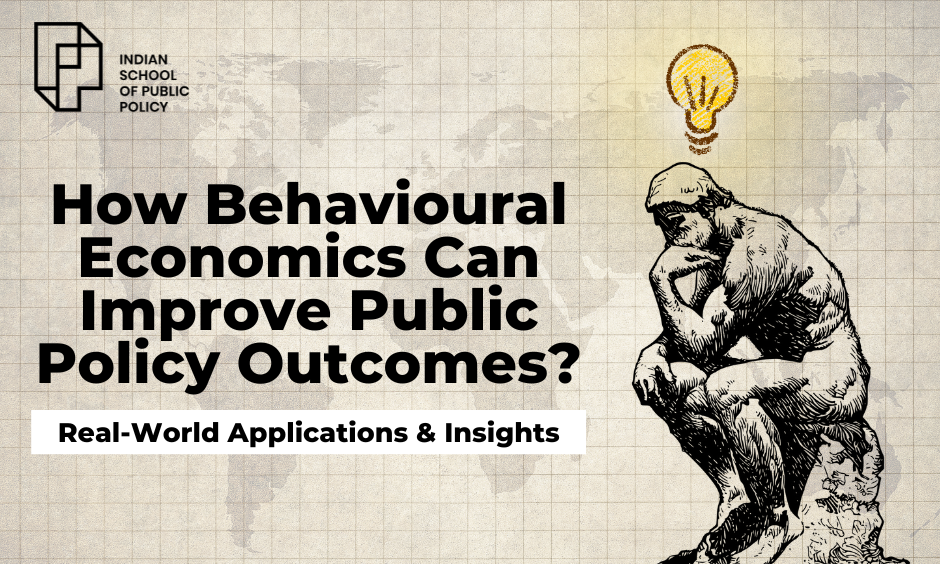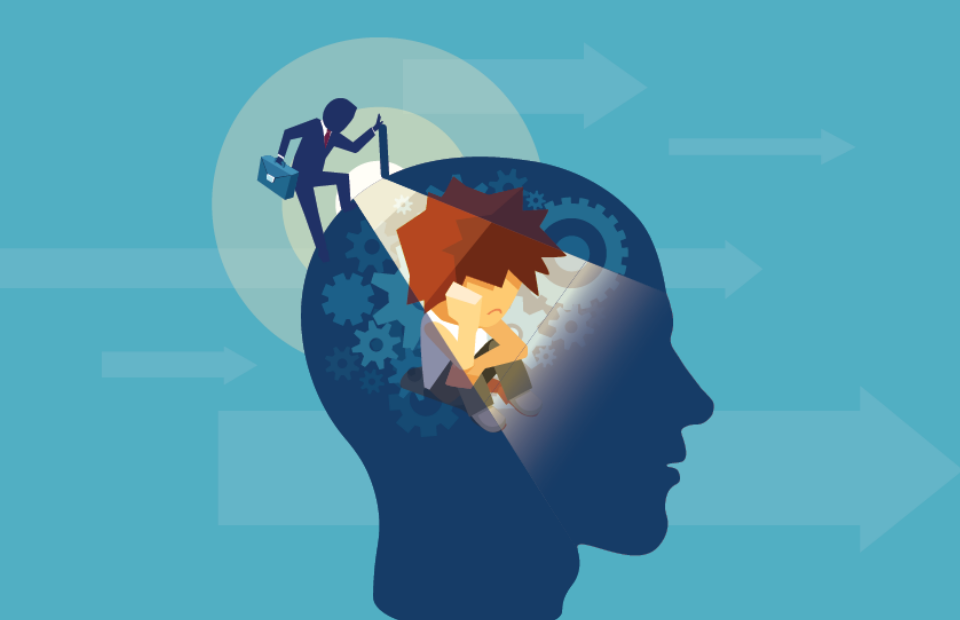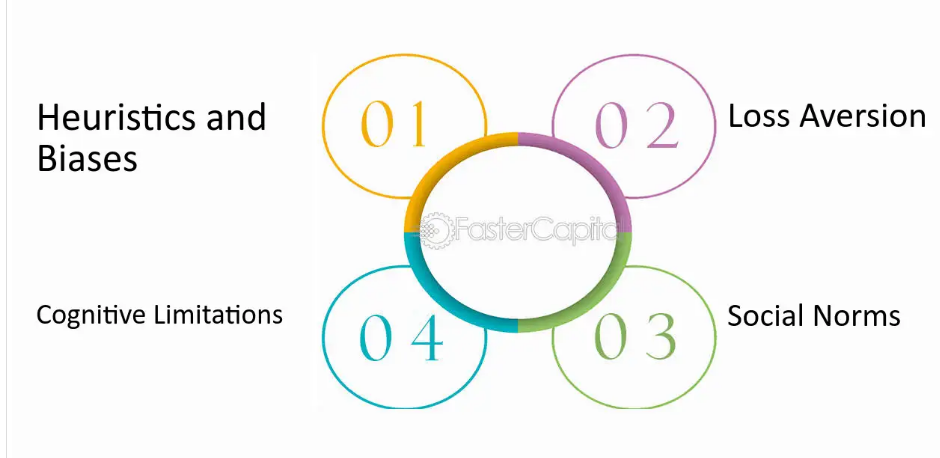
How Behavioural Economics Can Improve Public Policy Outcomes | Real-World Applications & Insights

Importance of behavioural economics to enhance public policy
Behavioural economics is an interdisciplinary field that blends psychology and economics to better understand how people make decisions in the real world. Unlike traditional economic models that assume people always make rational decisions, behavioural economics offers a deeper understanding of human behaviour, acknowledging that people often act irrationally. By understanding how people think and behave, policymakers can create more effective, adaptive solutions in areas like health, finance, sustainability, and many more. This insight is key to creating policies that genuinely connect with individuals and address real-world challenges.
Let’s dive deeper into behavioural economics to explore the fundamental concepts shaping decision-making, which will help craft policies that address pressing challenges and promote meaningful change.
Understanding behavioural economics
Behavioural economics examines how psychological factors influence the economic decision-making processes of individuals and organisations. Closely connected to normative economics, this field combines insights from psychology and economics to understand why people sometimes make irrational choices and how their behaviour deviates from the expectations of traditional economic models.

One of the key areas that behavioural economics explores is how irrational decisions impact personal and societal outcomes. For instance, biases such as loss aversion—the tendency to fear losses more than valuing equivalent gains—can result in poor financial decisions. Similarly, overconfidence and status quo bias can prevent people from changing behaviours, even when it would be beneficial. Understanding these biases is crucial for designing policies that are more in tune with human nature, leading to more effective and impactful interventions.
Having understood the essence of behavioural economics, let’s explore the key concepts of behavioural economics that help explain real-world decision-making.
4 core concepts that influence decision-making in behavioural economics
In behavioural economics, understanding the fundamental factors that shape human decisions is crucial for designing effective policies. These are the four core concepts that play a significant role in how people make choices.
- Heuristics and biases
Heuristics and biases refer to the mental shortcuts individuals use to simplify complex decision-making processes. While these shortcuts can be helpful, they often lead to systematic errors or biases, such as overestimating risks or making snap judgments based on incomplete information. These biases challenge the assumption of rationality in classical economics.
- Loss aversion
Loss aversion is the idea that people experience the pain of losing something much more intensely than the pleasure of gaining something of equal value. This tendency can influence decisions in areas like finance and health, where individuals may avoid taking risks due to the fear of potential losses, even when the benefits outweigh the drawbacks.
- Social norms
Social norms are the unwritten rules that govern behaviour in groups. They strongly influence decisions by encouraging conformity to what others are doing. In the context of public policy, leveraging social norms can encourage behaviours such as recycling, voting, or adopting health practices, making it a powerful tool for policymakers.
- Cognitive limitations
Cognitive limitations refer to the mental constraints individuals face when processing information. Humans have limited attention spans, memory, and the ability to process large amounts of data. These limitations can lead to suboptimal decision-making, especially when people are overwhelmed with choices or when they lack the cognitive resources to consider all available information.
Together, these four concepts help explain why individuals often deviate from rational decision-making and why understanding them is essential for creating policies that better align with real-world behaviours.

The role of behavioural economics in public policy
A. Understanding real-world decision-making
Behavioural economics provides policymakers with valuable insights into how people make everyday decisions, revealing why individuals often act in ways that contradict traditional economic predictions. For instance, it explains behaviours such as neglecting to save for the future, disregarding public health guidelines, or evading taxes. By studying these patterns, policymakers can anticipate challenges and develop strategies that resonate more effectively with human behaviour.
B. Nudging towards better choices
One of the most impactful applications of behavioural economics is the concept of “nudging.” Nudges are small, deliberate adjustments to the environment or decision-making framework that gently encourage people to make better choices without limiting their freedom. In India, policymakers have effectively used nudges alongside incentives and awareness campaigns to drive positive societal change. For example, through the Swachh Bharat Abhiyan, citizens are encouraged to adopt cleaner habits by showcasing peer behaviours and offering subsidies for sanitation products. These subtle interventions are helping to promote better hygiene and sanitation practices across the country.
C. Designing policies grounded in human behaviour
By leveraging behavioural insights, policymakers can craft initiatives that align with how people naturally think and act rather than relying on assumptions of rational decision-making. This approach leads to policies that are not only more effective but also more adaptable to real-world complexities. For instance, understanding procrastination and loss aversion can help shape policies that incentivise timely tax payments or adherence to health programmes. By focusing on actual human behaviour, behavioural economics bridges the gap between policy intentions and desired outcomes, ensuring impactful solutions.
The future of behavioural economics in public policy
As behavioural economics continues to evolve, it is shaping the way we understand and influence decision-making on a broader scale. Here’s what the future holds for this transformative field:
Beyond heuristics and biases
While heuristics and biases have been the cornerstone of behavioural economics, the discipline is moving towards a more nuanced exploration of decision-making. By integrating deeper psychological and sociological insights, researchers aim to understand how individuals navigate increasingly complex environments, such as digital ecosystems and global markets.
| For instance, examining collective behaviours in response to climate change or studying emotional responses in the context of financial crises can offer new ways to design impactful policies. |
Integration with AI and technology
The synergy between behavioural economics and artificial intelligence (AI) is opening up unprecedented opportunities for precision and scalability. AI-driven algorithms, coupled with big data analytics, allow for the real-time analysis of human behaviour, enabling policymakers to craft highly personalised interventions.
| For example, predictive models can identify individuals at risk of financial distress and provide tailored nudges, such as reminders to save or warnings about overspending. Similarly, AI can optimise the design of public health campaigns by identifying the most effective framing strategies for specific demographics. |
Growing interdisciplinary approach
The future of behavioural economics lies in its ability to collaborate across disciplines. By merging insights from sociology, psychology, neuroscience, and even anthropology, the field is creating a more holistic framework for understanding human behaviour. This interdisciplinary approach ensures that policies not only address individual behaviours but also consider the broader social and cultural contexts in which decisions are made.
| For instance, combining sociological studies of community dynamics with economic models can improve the effectiveness of group-oriented policies, such as those targeting vaccination uptake or energy conservation. |
The continued evolution of behavioural economics promises to deepen our understanding of human behaviour, empowering policymakers to design smarter, more adaptive solutions for the challenges of tomorrow.
Future directions and challenges
1. Limitations of current models
While behavioural economics has provided valuable insights into human decision-making, existing models still face limitations, especially when applied to complex or unpredictable environments. Traditional behavioural frameworks, such as heuristics and biases, may struggle to fully capture the range of factors influencing decisions, particularly in situations where uncertainty or rapidly changing conditions are involved. For instance, individuals’ behaviours in times of crisis, such as during a pandemic or economic recession, may not align with past patterns predicted by behavioural models. Additionally, many models assume that people act under limited cognitive constraints, but they often fail to account for the influence of evolving cultural, societal, or emotional factors. As the scope of decision-making becomes increasingly multifaceted, researchers must refine and adapt current models to better reflect the complexities of real-world environments.
2. The challenge of continuous innovation
The field of behavioural economics must continue evolving through ongoing research and innovation. New challenges, such as the impact of globalisation, digital transformation, and climate change, present unique behavioural issues that existing frameworks may not fully address. For example, understanding how people respond to rapidly changing environmental and technological shifts is essential for crafting effective policies in a world increasingly shaped by digital platforms and automation. By investigating emerging trends and applying novel experimental techniques, researchers can develop more nuanced models that consider a broader array of influences on human behaviour. This innovation is crucial not only for advancing academic theory but also for ensuring that public policy interventions remain relevant and effective in addressing future societal challenges.
3. Balancing technology and human behaviour
As technology advances, particularly with artificial intelligence (AI) and big data analytics, policymakers face the challenge of balancing these powerful tools with a deep understanding of human behaviour. While AI and big data can enhance behavioural economics models by offering new insights into patterns and trends, they also risk oversimplifying human decision-making. Technology may provide valuable predictions, but it cannot fully account for the emotions, social influences, and cognitive biases that drive many decisions. It is vital for policymakers to integrate technological advancements with a grounded understanding of the psychological and social complexities of human behaviour. This balance ensures that policies based on behavioural economics are not only data-driven but also sensitive to the broader, more nuanced factors that shape individual and collective actions.

Click to learn more about the evolving landscape of behavioural economics and how it offers innovative solutions to improve decision-making, shape effective policies, and address complex societal challenges.
Case studies of behavioural economics in public policy
1. India’s Swachh Bharat Mission
India’s Swachh Bharat Mission, a nationwide sanitation campaign, effectively incorporated behavioural insights to drive improvements in hygiene practices. By using culturally tailored messaging and engaging local communities, the campaign highlighted the importance of sanitation in a way that resonated with citizens. The use of social norms, emphasising cleanliness as a community responsibility, encouraged people to participate in maintaining their surroundings. This approach helped overcome barriers to hygiene adoption, turning sanitation into a shared societal goal.
Source: https://pib.gov.in/PressReleasePage.aspx?PRID=1577006
2. Beti Bachao, Beti Padhao scheme in India
The Beti Bachao, Beti Padhao (Save the Daughter, Educate the Daughter) initiative leveraged behavioural economics to shift societal attitudes toward gender equality and women’s empowerment. By using media campaigns and influencing social norms, the initiative challenged traditional gender biases, promoting the importance of education for girls. It helped break down long-standing barriers and fostered a more inclusive mindset across communities, encouraging families to invest in the education and well-being of their daughters.
Source: https://pib.gov.in/PressReleasePage.aspx?PRID=1577006
Final thoughts
Behavioural economics is reshaping the way we understand human decisions, revealing the complexities behind seemingly irrational choices. By tapping into the power of psychological insights, we can create public policies that truly connect with people, driving positive and lasting change. The future lies in refining these models, integrating cutting-edge technology, and embracing interdisciplinary collaboration to tackle emerging global challenges. When policymakers prioritise the nuances of human behaviour, they don’t just design better policies, they create solutions that resonate deeply, inspire action, and make a real difference in people’s lives. When behavioural economics is integrated with public policymaking, the potential for impact is limitless.
Register your Interest to Study at ISPP
FAQS
What is behavioural economics, and why is it important for public policy?
Behavioural economics combines insights from psychology and economics to understand how people make decisions. It’s important for public policy because it helps create policies that align with real human behaviour, addressing issues like biases, irrational choices, and cognitive limitations, ultimately leading to more effective and impactful interventions.
How can nudging improve public policy outcomes?
Nudging improves public policy outcomes by leveraging human tendencies, such as default choices or social influence, to steer individuals toward better decisions. By creating an environment that makes the desired choice easier or more appealing, nudges can increase participation in beneficial programs, improve health, and promote sustainability without coercion.
What are some real-world success stories of behavioural economics influencing public policy?
In India, behavioural economics has driven impactful public policies. The Swachh Bharat Abhiyan used social norms and public pledges to promote cleanliness and reduce open defecation. The Jan Dhan Yojana leveraged nudges like simplified account-opening processes to encourage financial inclusion. Additionally, LPG subsidy reforms, particularly under schemes like PAHAL (Direct Benefit Transfer of LPG) and Ujjwala Yojana, align with behavioural economics principles because they use financial incentives and nudges to influence behaviour. By transferring subsidies directly to bank accounts, the system encouraged transparency and reduced wastage, nudging households to consciously pay for LPG and make informed choices.
What are the key concepts of behavioural economics that policymakers should understand?
The core concepts include heuristics and biases (mental shortcuts leading to errors), loss aversion (the fear of losses outweighing the desire for gains), social norms (influences from group behaviours), and cognitive limitations (constraints on information processing), all of which affect decision-making.
How can behavioural economics drive social change?
Behavioural economics uses insights into human behaviour to encourage positive social changes. By shaping social norms, such as promoting gender equality or eco-friendly habits, it can influence large groups of people. However, there are ethical concerns about influencing people’s choices without their full awareness. Public reaction varies, with some supporting these changes through nudges (small, positive behavioural shifts) in policies and campaigns.


